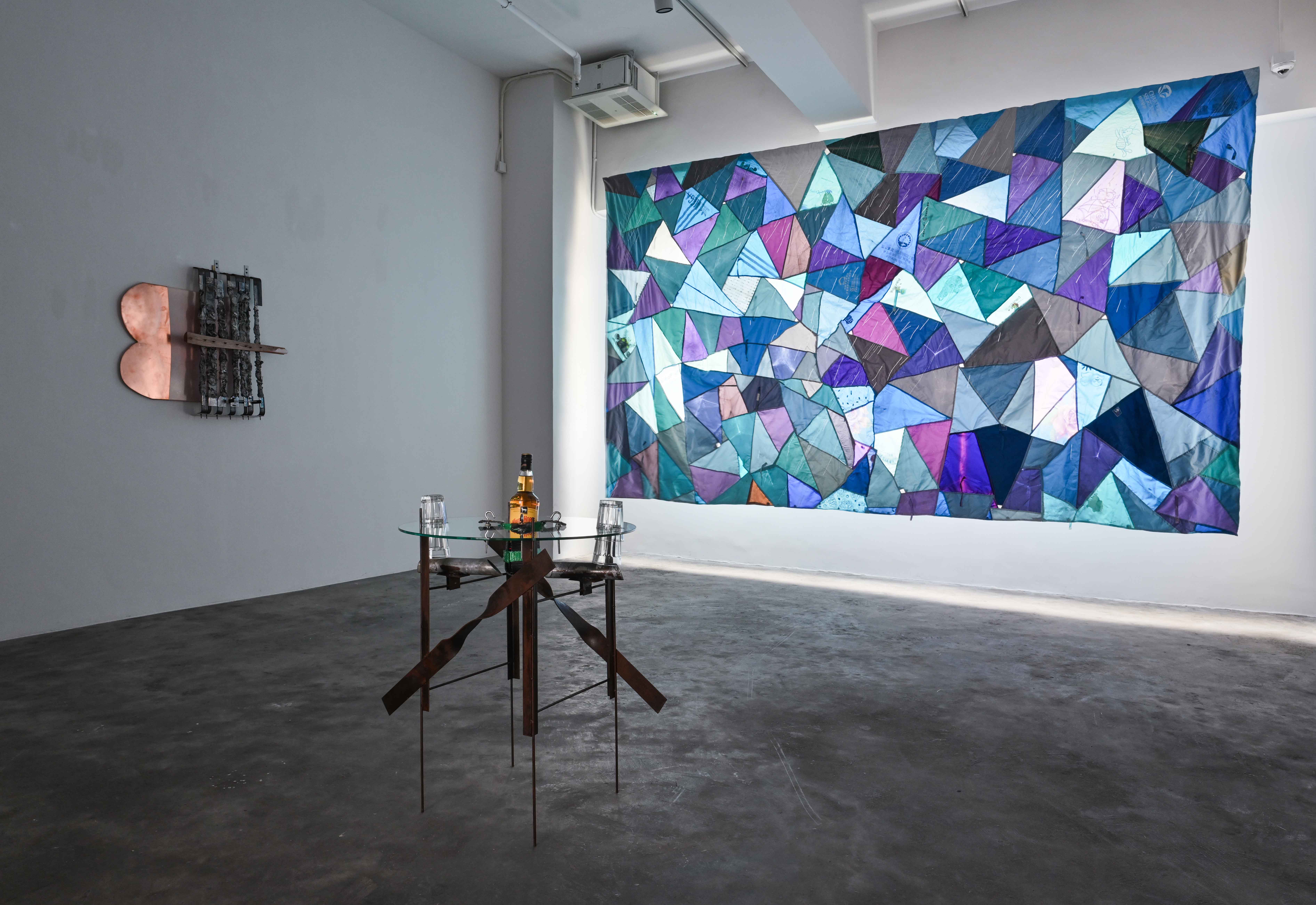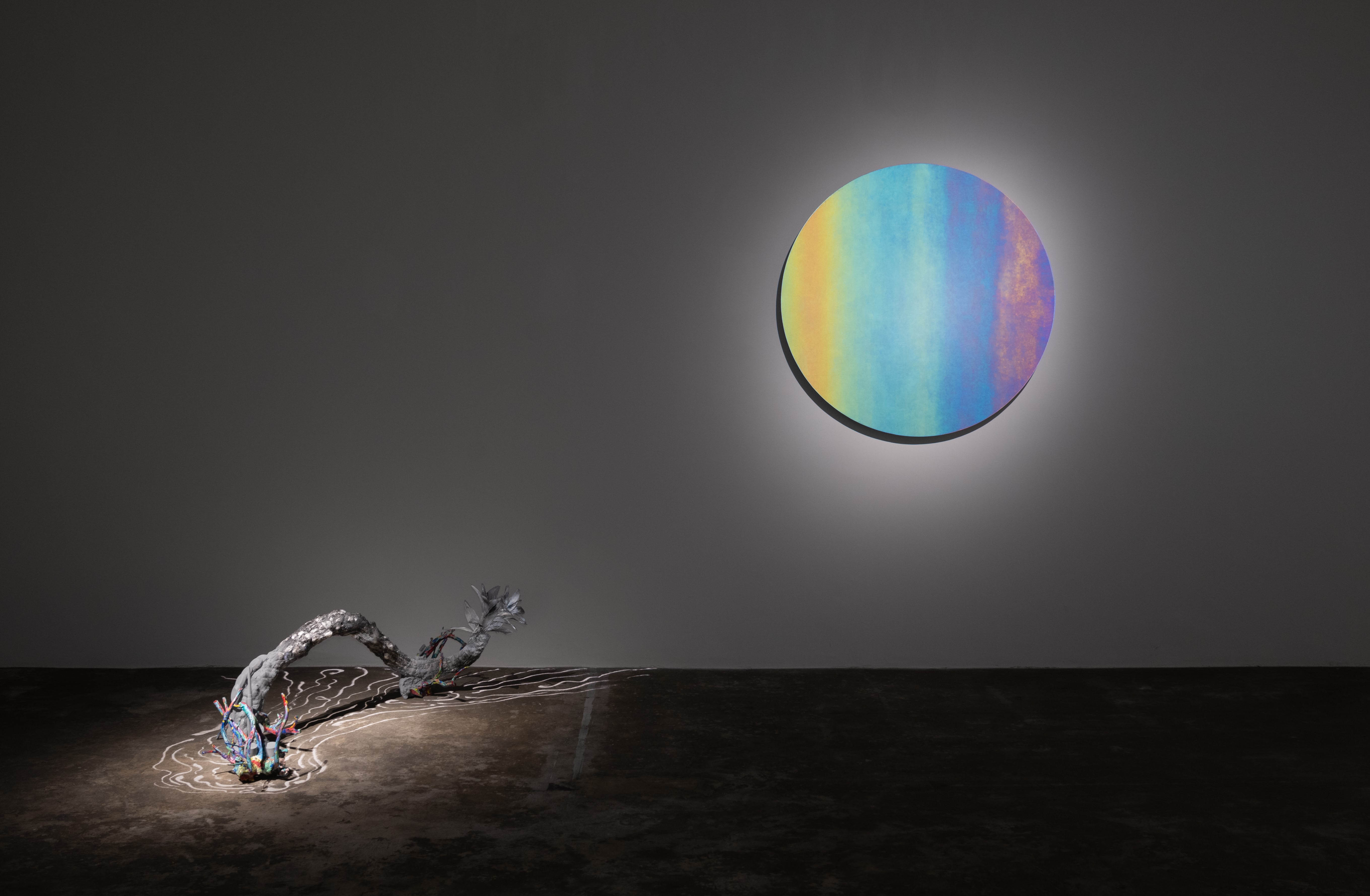Shows
Reignited by “Residual Heat”


In geoscience, residual heat refers to the gravitational energy left over from planetary formation. It describes how natural forces evolve, and evokes our shared past. For curator Chris Wan Feng, the term is an apt metaphor for the aftermath of Hong Kong’s 1997 handover from the United Kingdom to China, a post-colonial transition that has been marked by political turmoil and epidemics. Named after this term, his exhibition at Axel Vervoordt Gallery bridged the practices of seven multigenerational Hong Kong artists who engage with this socio-political context, showcasing their works of various mediums across three themed rooms.
The first room featured works that review key political events in the Special Administrative Region, exemplified by Ivy Ma’s Her Newspaper Clippings (2018) at the entrance. The work rewinds to the year of Hong Kong’s handover by collaging slender strips cut from local newspapers published in 1997. Close by, the floor-to-ceiling window was veiled by a giant navy and violet curtain. Resembling living-room furnishings, the drapery was in fact Jaffa Lam’s A piece of cityscape, 2021 (2021), stitched together from scraps of umbrella fabric in reference to the 2014 pro-democracy Umbrella Movement, spurred by the Central Government’s decision to rule out unrestricted universal suffrage. Alone at the center of the room was Ocean Leung’s Waiting with cheap spirit without water (2020), an eerily dysfunctional low table with irremovable water glasses and an unopened whiskey bottle. The work hints at unobtainable pleasure and freedom, metaphorically alluding to the repressive social environment that followed the 2019–20 protests.

In the dimly lit second room, obscurer narratives unfolded in works about borders and lines. Illuminating the theme was Morgan Wong’s Dash—6 (2016), an abstract canvas depicting a stumpy, curved line. The shape is actually a scaled-up dash from the dotted line that defines the controversial South China Sea territory on Chinese maps. Nearby, two wood-panel works mounted on adjacent walls, Shawn Tang’s Lunar Sculpture (2021) and Wu Jiaru’s beige_object_moon_violet_100 (2021), mirror each other’s circular shapes. In the former, thousands of thin pencil lines coalesce into a pearlescent coating, while the latter is covered in a special spray that takes on a colorful, metallic sheen when photographed with flash. Producing different light effects, these shiny surfaces mask the grainy texture of the raw material, blurring the boundary between artificial and natural.
In the final room, huge windows offered sweeping views of natural scenery. This chapter recounted the city’s memories of pandemics, or as some people may say, nature’s revenge on humanity. The centerpiece was Jaffa Lam’s eight-meter-long wooden sculpture To someone wants to hide (2003), created at the time of the SARS outbreak. Resembling large prehistoric fossils or the shells of subterranean creatures, the work is a symbolic refuge against the ancient threat of disease. Traversing through time, Kurt Chan’s ink series Rain or Shine, Études of Everyday (2021) brought us back to the present, through drawings of daily life in the city during the Covid-19 pandemic. The 19 abstract sketches of lines, dots, and chunks of black ink hang on the wall like calendars, documenting the artist’s thoughts and feeling during lockdown.
Additionally, the show featured three poems by Liu Wai Tong, printed on leaflets alongside the curatorial statement. Respectively titled Dangerous Dream, Boundary/Line, and Rest, the poems weave together bleak imageries such as knife marks, black flags, a pale blue moon, and marches to the west, obscurely alluding to recent social movements in Hong Kong. During my visit, I kept looking for a convincing connection between the literature and the works, but never reached a positive conclusion. The poems were supposed to bring “another dimension” to the exhibition, but when simply and crudely presented as printed materials, they appear rather flat.
Although an imperfect curatorial attempt at incorporating disparate artistic and literary elements, “Residual Heat” still succeeded in contextualizing the collective social narratives in the work of Hong Kong artists, both emerging and established. Subtle yet poignant, it reignited many questions about the intertwined fates of the city and its art communities.
“Residual Heat” was on view at Axel Vervoordt Gallery, Hong Kong, from July 17 to August 28, 2021.







